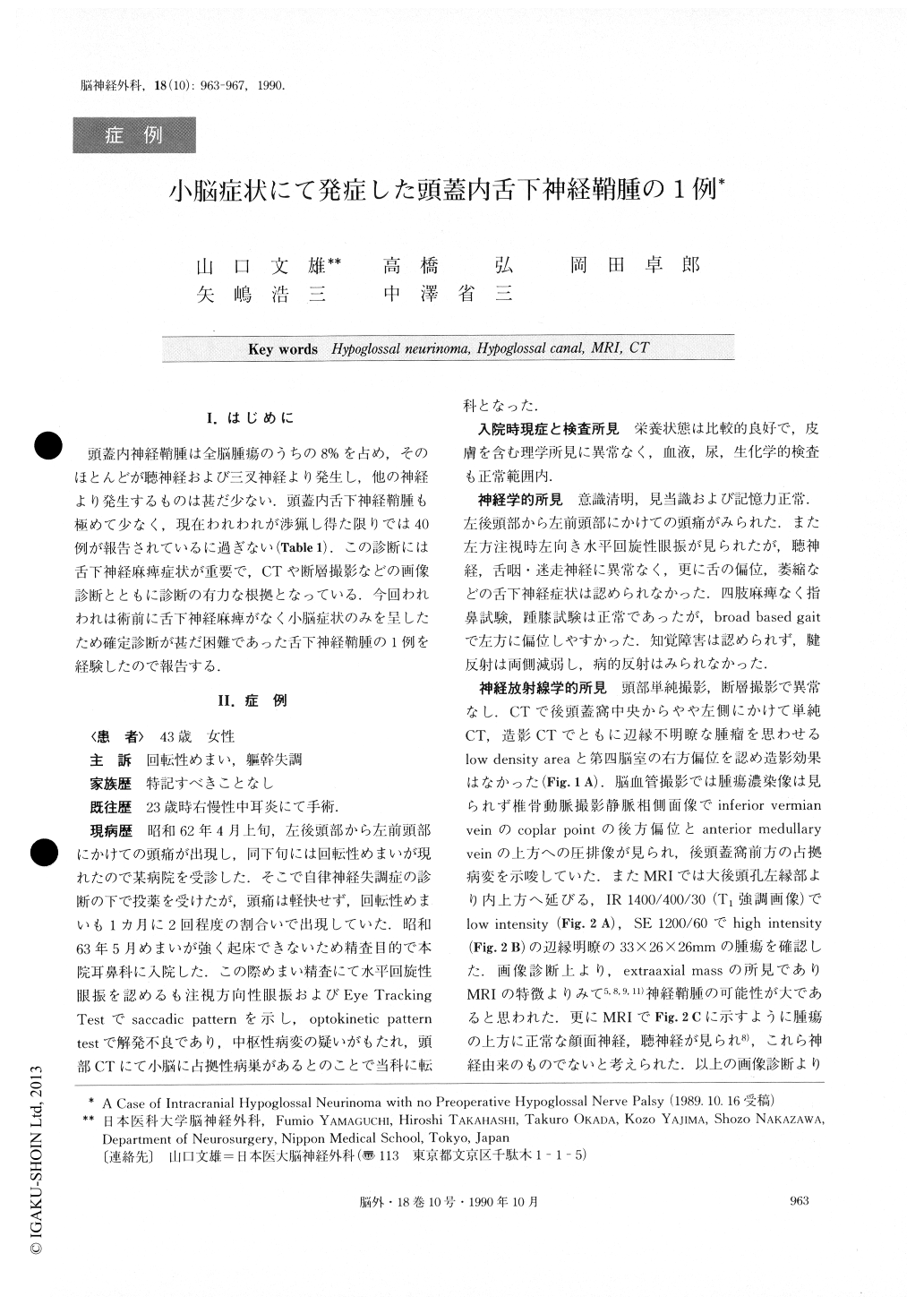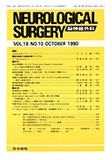Japanese
English
- 有料閲覧
- Abstract 文献概要
- 1ページ目 Look Inside
I.はじめに
頭蓋内神経鞘腫は全脳腫瘍のうちの8%を占め,そのほとんどが聴神経および三叉神経より発生し,他の神経より発生するものは甚だ少ない.頭蓋内舌下神経鞘腫も極めて少なく,現在われわれが渉猟し得た限りでは40例が報告されているに過ぎない(Table1).この診断には舌下神経麻痺症状が重要で,CTや断層撮影などの画像診断とともに診断の有力な根拠となっている.今回われわれは術前に舌下神経麻痺がなく小脳症状のみを呈したため確定診断が甚だ困難であった舌下神経鞘腫の1例を経験したので報告する.
A case of intracranial hypoglossal neurinoma without hypoglossal nerve palsy is reported. A 43-year-old housewife was admitted to our hospital with vertigo and left occipital headache. Neurologically, no cranial nerve deficits were present. CT scan and cerebral angiography showed a mass in the lower left posterior fossa. MRI also revealed a well circumscribed extra-axial mass compressing brain stem and cerebellum to the right. Left suboccipital craniotomy was performed and the tumor was removed subtotally. From the opera-tive findings, the 8th to 11th cranial nerves were not re-lated to the tumor, however, the origin of the tumor was not confirmed. The histology showed Antoni A type neurinoma mixed partially with Antoni B type. Af-ter the operation, the tongue deviation appeared to the left, but no other cranial nerve deficit was noticed. Post-operative neuroradiological reexaminations defined slight enlargement of the hypoglossal canal. Then, we concluded that the origin of the tumor must have been the hypoglossal nerve. Most intracranial hypoglossal neurinoma grow in the hypoglossal canal followed by enlargement or erosion of the hypoglossal canal. The author thought that this case suggests that this hypo-glossal neurinoma originated from a few rootlets of hypoglossal nerve and grew mainly between the medul-la and the hypoglossal canal.

Copyright © 1990, Igaku-Shoin Ltd. All rights reserved.


